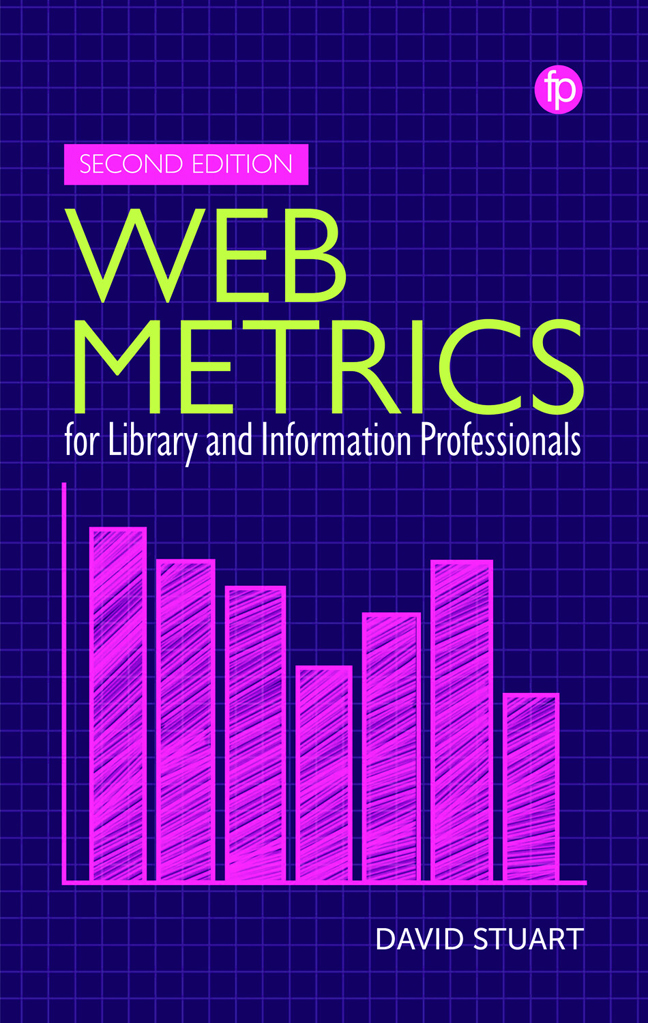Book contents
- Frontmatter
- Contents
- Figures and Tables
- About the Author
- Preface to the Second Edition
- 1 Introduction
- 2 Bibliometrics, Altmetrics, Web Metrics and Webometrics
- 3 Data Collection Tools
- 4 Evaluating Web Impact
- 5 Evaluating Social Media Impact
- 6 Relational Web Metrics and Social Network Analysis
- 7 Web Bibliometrics
- 8 Web Metrics for Data and Code
- 9 The Future of Web Metrics and the Library and Information Professional
- References
- Index
- Frontmatter
- Contents
- Figures and Tables
- About the Author
- Preface to the Second Edition
- 1 Introduction
- 2 Bibliometrics, Altmetrics, Web Metrics and Webometrics
- 3 Data Collection Tools
- 4 Evaluating Web Impact
- 5 Evaluating Social Media Impact
- 6 Relational Web Metrics and Social Network Analysis
- 7 Web Bibliometrics
- 8 Web Metrics for Data and Code
- 9 The Future of Web Metrics and the Library and Information Professional
- References
- Index
Summary
Introduction
As we explained in Chapter 2, the term ‘web bibliometrics’ is used within this book to refer to the intersection between bibliometrics and web metrics, and involves the quantitative investigation of traditional publications (e.g., journals and books) through the web.
Traditional bibliometric investigations have not interrogated a universal library containing all bibliographic material that has ever been written but, rather, are operationalised through limited bibliographic resources, most often Scopus or the Web of Science citation index. Such bibliographic resources are restricted to a small proportion of the items that would be included within a universal library, and the information stored about the items is also restricted.
The web has made traditional bibliographic resources more accessible and extended potential bibliometric investigations in three ways. It:
• potentially provides access to a greater proportion of items than would be housed in a universal library;
• can provide access to the full text rather than just metadata;
• enables the analysis of bibliographic content within the context of how it is being used;
and it has introduced new players into the market.
These extensions to traditional bibliometrics can potentially facilitate the provision of better services by librarians, through the provision of more detailed maps of science or the development of altmetrics measuring the impact of traditional publications online.
This chapter investigates each of these three areas of web bibliometrics and looks more closely at some of the research that has taken place and resources available.
More bibliographic items
Within this book use of the term ‘bibliometrics’ is restricted to the spirit of its Greek stem, ‘biblio’, and relates to the quantitative analysis of books, journals and similar types of publication that would traditionally have formed the basis of paper-based publications. By keeping to its more restrictive meaning it may seem as though by definition there are no new objects for investigation, but the vast majority of publications were never included within the bibliographic databases that formed the basis of many previous investigations.
The creation of bibliographic databases such as the Science Citation Index has traditionally been very resource intensive and it was therefore in the interests of abstracting and indexing services to limit the number of publications that were included.
- Type
- Chapter
- Information
- Web Metrics for Library and Information Professionals , pp. 123 - 140Publisher: FacetPrint publication year: 2023

